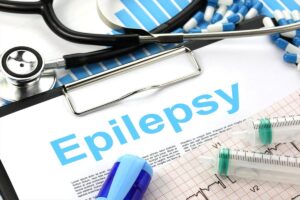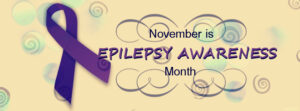The World Health Organization (WHO) states that epilepsy affects approximately 50 million people globally, with nearly 80% of those affected living in low and middle-income countries. This condition significantly increases mortality rates in these regions, and better diagnosis and treatment could prevent many of these deaths. Additionally, deaths from falls, drowning, burns, and prolonged seizures are more common in low- and middle-income countries. For more information on what epilepsy entails, continue reading. epilepsy awareness month is November of every year.
What is epilepsy?:-
Epilepsy is a neurological disorder where the brain acts abnormally, leading to episodes like losing awareness, having seizures, or experiencing unusual feelings and behaviors. It can affect anyone, no matter their gender, race, background, or age. Just having one seizure doesn’t mean someone has epilepsy. To diagnose epilepsy, a person must have at least two seizures that happen at least 24 hours apart, without obvious reasons.

Types of epilepsy:-
Doctors categorize epilepsy into four types:
- Generalized Epilepsy: Seizures affect both sides of the brain at the same time.
- Focal Epilepsy: Also called partial seizures, these start in specific areas on one side of the brain.
- Focal and Generalized Epilepsy: People with this type have both generalized and focal seizures.
- Unknown if Focal or Generalized Epilepsy: Sometimes, it’s unclear whether seizures are focal or generalized. This can happen if no one witnesses the seizure or if tests are inconclusive. In such cases, it’s labeled as “unknown if generalized or focal.”
Epilepsy awareness month:-
epilepsy awareness month is November of every year.

Symptoms of epilepsy:-
What causes epilepsy:-
Common causes of epilepsy include:
- Genetics: Some people inherit genes that make them more likely to develop epilepsy.
- Head Injuries: Trauma from accidents or injuries can lead to epilepsy.
- Brain Conditions: Issues like abnormal blood vessels or brain tumors can cause seizures.
- Infections: Diseases like HIV, meningitis, and viral encephalitis can trigger epilepsy.
- Prenatal Problems: Poor nutrition or infections in the mother can harm a baby’s brain before birth.
- Developmental Disorders: Conditions like autism can increase the risk of epilepsy.

Types of Seizure Attacks in Epilepsy?:-
Seizure attacks can be either focal or generalized, based on where they start in the brain. Here are the two main types of seizures:
- Focal Seizures These start in one specific area of the brain and are divided into two types:a. Focal Seizures without Loss of Consciousness: The person stays aware during these seizures. Symptoms include:
- Changes in taste, hearing, smell, touch, or other sensations
- Dizziness
- Tingling or twitching in the limbs
b. Focal Seizures with Impaired Awareness: The person loses awareness of their surroundings. Symptoms include:
- Staring blankly
- Unresponsiveness
- Repetitive movements
- Generalized Seizures These involve all areas of the brain. There are six types:
- Absence Seizures: Also called petit mal seizures, causing brief loss of awareness, blank staring, and repetitive movements like blinking and lip-smacking.
- Tonic Seizures: Sudden stiffness or involuntary movements in the muscles of the trunk, arms, or legs.
- Atonic Seizures: Sudden loss of muscle tone, causing the person to collapse.
- Clonic Seizures: Repeated involuntary muscle contractions in the face, neck, and limbs.
- Myoclonic Seizures: Quick jerks or twitches in the arms and legs, either alone or in clusters.
- Tonic-Clonic Seizures: Formerly called grand mal seizures, with symptoms including:
- Stiffening of the body
- Shaking
- Loss of bladder or bowel control
- Biting of the tongue
- Loss of consciousness
Risk Factors of Epilepsy?:-
Factors that can increase the risk of epilepsy include:
- Age: Epilepsy often starts in young children or older adults.
- Family History: If epilepsy runs in your family, you are more likely to develop it.
- Head Injuries: A past head injury can increase your risk of epilepsy. Wearing seat belts in cars and helmets when biking, skiing, or motorcycling can help prevent this.
- Vascular Diseases and Stroke: Having a stroke or other blood vessel problems can lead to epilepsy. To lower this risk, avoid alcohol and tobacco, eat a balanced diet, exercise regularly, maintain a healthy weight, and limit salt intake.
- Dementia: Older adults with dementia are more likely to get epilepsy.
- Brain Infections: Infections like meningitis that cause swelling in the brain or spinal cord can increase the risk of epilepsy.
- Childhood Seizures: High fevers in children can cause seizures. Although most fever-related seizures don’t lead to epilepsy, long-lasting seizures can be a sign of higher risk.
How to diagnose epilepsy:-
After a thorough physical exam, a doctor may order blood tests and neurological imaging tests to find out more about the problem. Blood tests check:
- Signs of past infections
- How well the liver and kidneys are working
- Blood sugar levels
Doctors also use imaging tests to understand how serious the condition is. These tests include:
- Electroencephalogram (EEG) to look at the brain’s electrical activity
- CT scan
- MRI
- PET scan
- SPECT scan
Epilepsy treatment:-
Treatment for epilepsy depends on how severe the symptoms are. Here are common treatment methods:
- Medications: Anti-epileptic drugs help prevent seizures when taken as prescribed.
- Vagus Nerve Stimulator (VNS): This device, placed under the skin on the chest, reduces seizure frequency and intensity.
- Ketogenic Diet: A high-fat, low-carbohydrate diet is effective, especially for children who don’t respond well to medications.
- Brain Surgery: Surgery can treat the part of the brain causing seizures and lessen symptoms.
Common medications used for epilepsy include:
- Levetiracetam (Keppra)
- Lamotrigine (Lamictal)
- Topiramate (Topamax)
- Valproic acid (Depakote)
- Carbamazepine (Tegretol)
- Ethosuximide (Zarontin)
Prevent Epilepsy:-
While early treatment can help reduce seizures, there are steps you can take to prevent them:
- Keep a seizure log to identify triggers and adjust your routine.
- Wear a medical-alert bracelet for prompt help during a seizure.
- Teach family and friends how to assist during a seizure.
- Talk to a mental health professional if you feel anxious or depressed.
- Join support groups to connect with others who understand.
- Eat well and exercise regularly to stay healthy.
Epilepsy affects everyone differently, but staying informed and positive is important. Working closely with healthcare providers helps manage seizures and live a full life.
FAQ:-
Q1:- Can epilepsy live a normal life?
Ans:- Many people with epilepsy can live productive lives, even though it’s a long-term condition. However, those who have frequent or hard-to-control seizures may face challenges with employment and need assistance with daily tasks.
Q2:- Can epilepsy go away?
Ans:- Although epilepsy cannot be cured, it can be managed with proper treatment. Medications, surgery, and self-care strategies can help individuals control and reduce the impact of this condition.
Read more about “Malaria: A Global Health Crisis and Call to Action”- Top 5 Symptoms, Causes, Treatment & Prevention ,WHO prequalifies second malaria vaccine
